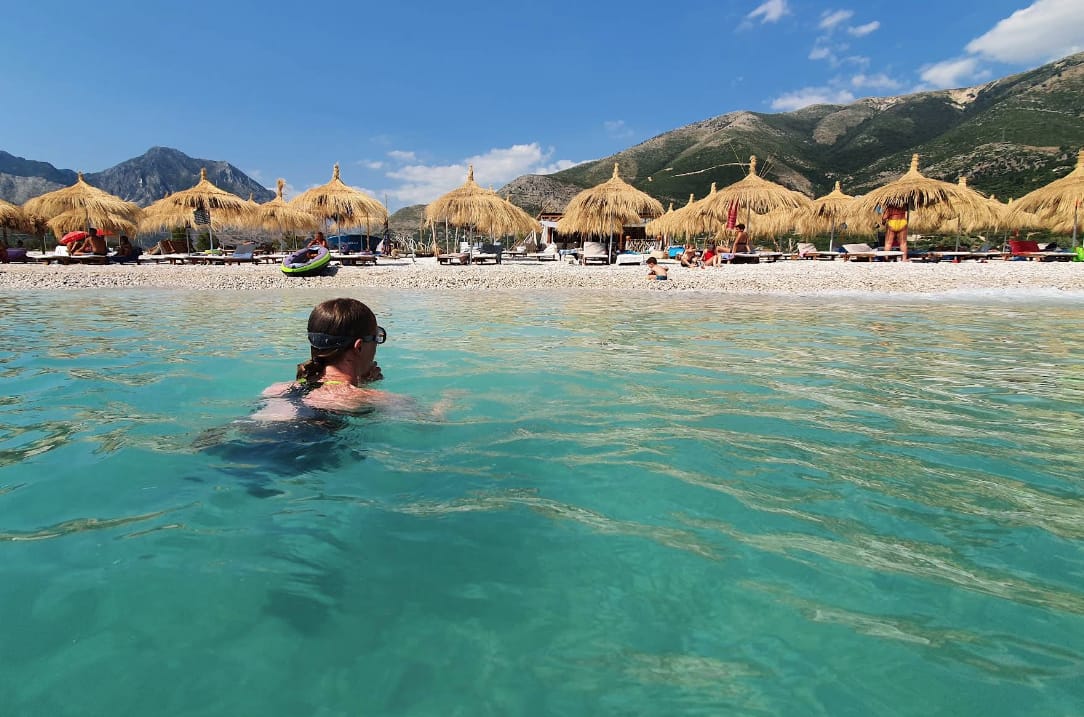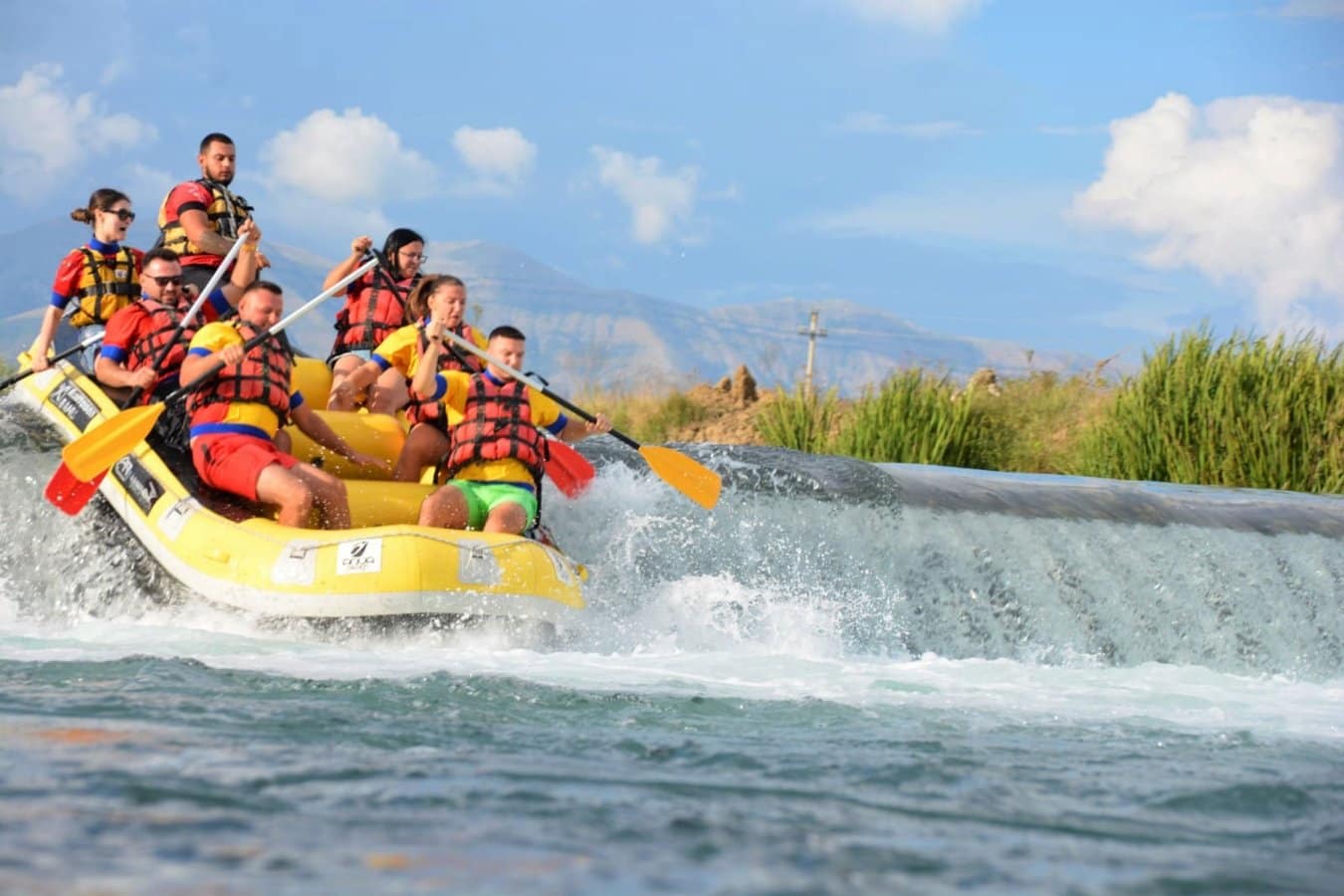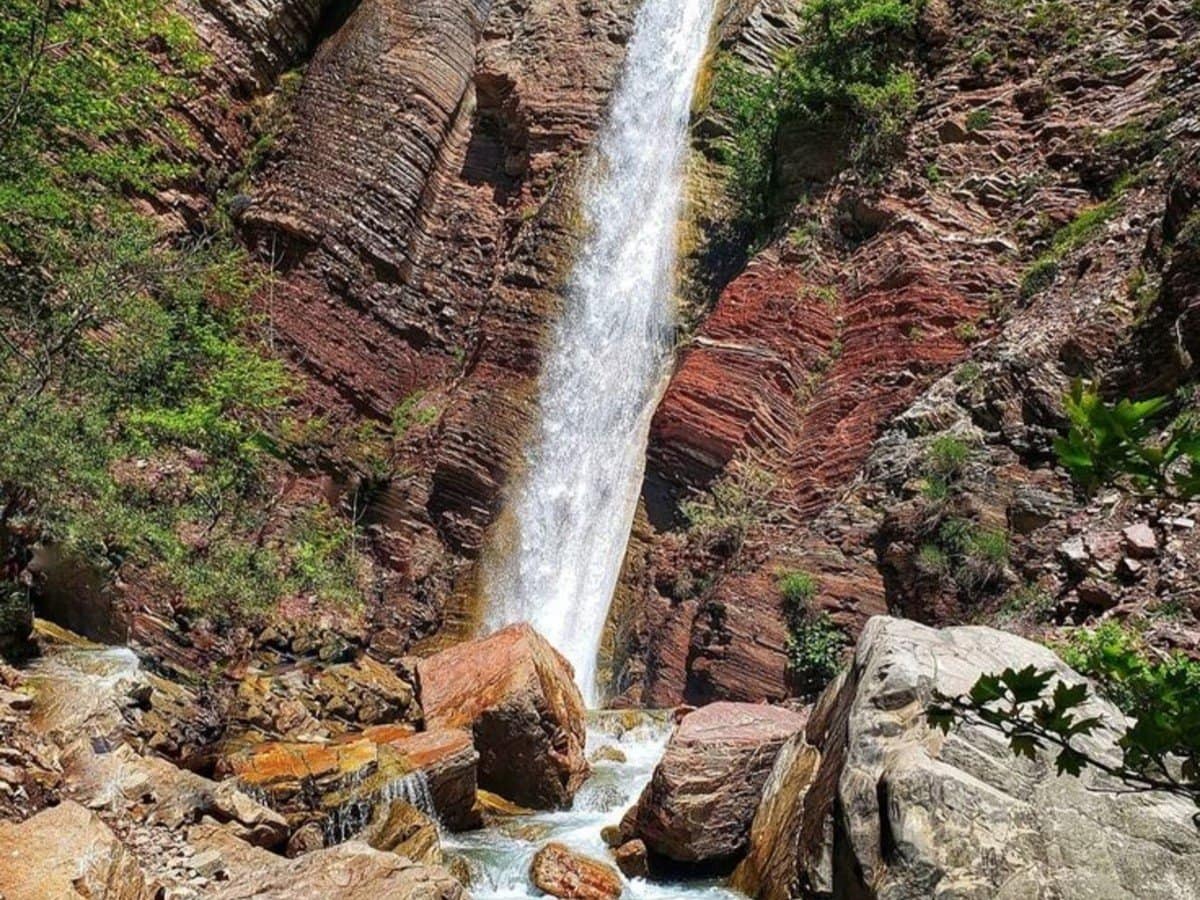Iconic Experiences & Best Time to Visit
Your Albanian Adventure !
In Part 1 of our Albania Travel Guide, we unveiled the compelling reasons why this captivating country should be your next European adventure – from its unparalleled hospitality to its surprising affordability. Now, let’s dive into the experiences that await you, helping you decide the best time to visit and what incredible sights and activities to prioritize. Albania, despite its relatively small size, offers an incredible range of experiences that cater to every type of traveler. Whether you’re an adrenaline junkie, a history buff, a sun worshiper, or a foodie, Albania truly has it all!
Best Time to Visit: Albania Through the Seasons
Albania shines year-round, offering distinct charms depending on the season. While we highly recommend the shoulder seasons for their pleasant weather and fewer crowds, each period has its unique appeal.
- Spring (April-May): This is arguably one of the most beautiful and best time to visit. The landscapes are lush and vibrant with wildflowers, the weather is pleasantly mild – perfect for hiking and exploring cities – and tourist numbers are lower. It’s an ideal time for active travelers and those seeking cultural immersion without the summer heat.
- Summer (June-August): This is the prime beach season along the Albanian Riviera. The coastal towns buzz with energy, and the crystal-clear waters are inviting. While popular spots will be lively, you’ll still find plenty of serene coves. The mountains offer a refreshing escape from the heat, making it the best time to visit for diverse itineraries.
- Autumn (September-October): Another fantastic shoulder season. The summer crowds have thinned, but the weather remains warm enough for swimming into early October. The landscapes are painted in beautiful autumnal hues, it’s harvest season (perfect for wine tasting and local produce), and cultural exploration is comfortable.
- Winter (November-March): For those seeking a different kind of adventure, winter reveals Albania’s snowy beauty. Skiing is possible in areas like Dardha and Korça, traditional guesthouses offer cozy retreats, and cities are alive with local life and festive traditions. It’s an excellent time for cultural immersion and experiencing Albania without the tourist overlay.
Q: When is the absolute best time to visit Albania for diverse experiences?
A: While Albania is a year-round destination, the shoulder seasons (April-May and September-October) offer the perfect balance of pleasant weather, vibrant nature, cultural events, and fewer tourist crowds, making them ideal for exploring both mountains and coastlines.
Iconic Experiences: Your Albanian Adventure Awaits
Ready to immerse yourself? Here’s a glimpse into the unforgettable adventures that await you in Albania.
Outdoor & Adventure: Nature’s Untamed Playground
If nature is calling your name, Albania’s rugged landscapes and pristine wilderness offer endless possibilities for adventure.
- Theth & Valbona (Albanian Alps): You absolutely must explore these gems in the Albanian Alps. The famous Valbona-Theth hike is a truly breathtaking experience, often hailed as one of Europe’s most stunning trails. This moderately challenging hike typically takes 6-8 hours, involving elevation gains and rocky terrain, but the reward is breathtaking panoramic views and an immersive experience in Albania’s wild heart. You’ll traverse dramatic mountain passes, encounter traditional stone houses, and feel a profound connection to nature. Beyond the famous traverse, these valleys offer countless other trails for all skill levels, from gentle walks to challenging peak ascents.
Q: How challenging is the Valbona-Theth hike?
A: The Valbona-Theth hike is moderately challenging, typically taking 6-8 hours. While accessible to most fit hikers, it involves elevation gains and rocky terrain. The reward is breathtaking panoramic views and an immersive experience in Albania’s wild heart.
- Koman Lake Ferry: Often dubbed “Europe’s most beautiful ferry ride,” the journey across Koman Lake is an experience in itself. As the ferry navigates through narrow gorges reminiscent of Norwegian fjords, you’ll witness remote villages clinging to cliff sides, creating a truly cinematic and serene experience.
- Nivica Canyon: A hidden gem in the south, Nivica offers spectacular opportunities for canyoning and trekking. This untouched wilderness provides a true sense of discovery, with dramatic rock formations and pristine waters.
- Vjosa River (Lumi i Vlorës): Known as “Europe’s Last Wild River,” the Vjosa flows untamed from source to sea, offering unique opportunities for rafting, kayaking, and exploring untouched ecosystems. Its environmental significance makes it a special place for eco-conscious travelers.
- Thermal Baths of Përmet: Nestled in the stunning Langgarica Canyon, these natural hot springs offer a therapeutic and relaxing experience amidst incredible natural beauty. The sulfurous waters are believed to have healing properties, and the setting is simply idyllic.
- Shala River: Often referred to as the ‘Albanian Thailand,’ this stunning turquoise river is accessible by boat from Koman Lake, leading to incredibly clear waters and lush surroundings, perfect for swimming and relaxation.
- Lake Ohrid (Albanian side – Pogradec, Lin): Experience the serene beauty of one of Europe’s oldest and deepest lakes. The Albanian side offers charming towns like Pogradec and the ancient village of Lin, known for its mosaic ruins.
- Mount Tomorr: For the adventurous hiker, scaling Mount Tomorr, a sacred mountain, offers not just a challenging climb but also incredible spiritual significance and panoramic views across central Albania.
Beach Escapes: The Unspoiled Mediterranean Coastline
For sun-seekers and ocean lovers, Albania boasts some of the most pristine and captivating beaches in the Mediterranean, rivaling those of Greece and Italy without the hefty price tag.
- Ksamil: Dive into the crystal-clear, turquoise waters of Ksamil, often called the “Maldives of Europe” due to its tiny, picturesque islands just offshore. While popular in peak summer, its stunning beauty is undeniable.
Q: Which Albanian beach is best for families?
A: Ksamil, with its shallow, crystal-clear waters and small islands perfect for swimming, is highly recommended for families. However, beaches around Himara also offer family-friendly sections with good amenities.
- Dhërmi & Jale: These iconic beaches offer a vibrant atmosphere, with lively beach clubs alongside quieter stretches of pebbled shore. They are perfect for unwinding and enjoying the Mediterranean sun.
- Borsh: Home to the longest continuous beach in Albania, Borsh offers expansive stretches of golden sand and tranquility, with traditional villages nestled in the hills just behind.
- Rana e Hedhun (“Thrown Sand”): Located near Shëngjin in the north, this unique beach is characterized by wind-swept sand dunes cascading directly into the sea, offering a truly unique and somewhat wild coastal experience.
- Himara: A charming town that serves as a perfect base for exploring numerous surrounding beaches, offering a mix of vibrant shores and secluded coves.
- Porto Palermo: Home to Ali Pasha’s impressive triangular castle, this area offers incredibly secluded coves and clear waters, ideal for a quiet swim and exploration.
- Gjipe Beach: A true adventure to reach, Gjipe is nestled at the end of a stunning canyon. Accessible by a challenging hike or a short boat ride, its seclusion and dramatic setting make it incredibly rewarding.
Q: Are there any quiet, secluded beaches in Albania?
A: Absolutely! While popular spots can get lively, you can find serenity at beaches like Gjipe (requiring a short hike or boat ride), portions of Borsh, or exploring the lesser-known coves around Porto Palermo.
History & Culture: A Journey Through Time
Immerse yourself in Albania’s rich and complex past, from ancient empires to recent communist history.
- Gjirokastër, the “Stone City”: A UNESCO World Heritage site, Gjirokastër is a marvel of Ottoman architecture, with its unique stone houses clinging to steep hillsides. Wander through its labyrinthine cobbled streets, explore the imposing castle with its arms museum, and delve into the Ethnographic Museum, housed in the childhood home of dictator Enver Hoxha.
- Berat, the “City of a Thousand Windows”: Another UNESCO gem, Berat is famous for its distinct Ottoman-era houses with numerous windows that seem to gaze out from the hillside. Explore the historic Gorica and Mangalem quarters, climb up to the ancient castle, which is still inhabited, and visit the Onufri Iconography Museum inside the Dormition Cathedral.
- Kruja: Perched dramatically on a mountainside, Kruja was the Albanian stronghold of the national hero, Skanderbeg, who famously resisted the Ottoman Empire. Explore the reconstructed castle, visit the Skanderbeg Museum, and haggle for souvenirs in the charming Ottoman-era Bazaar, lined with traditional crafts.
- Vlora, the City of Independence: This coastal city holds immense significance in modern Albanian history, as it was here that Albania declared its independence from the Ottoman Empire in 1912. Visit the Independence Monument and feel the weight of history in this pivotal city.
- Tirana: The vibrant capital, Tirana, has undergone a remarkable transformation from its communist past. Explore the colorful buildings, transformed bunkers (Bunk’Art 1 and 2 offer a chilling and fascinating look into Albania’s communist secrets), bustling Skanderbeg Square, and the lively Blloku district, once reserved for the communist elite, now a hub of trendy cafes, bars, and nightlife.
Q: What are the must-see cultural sites in Tirana?
A: In Tirana, don’t miss exploring the Bunk’Art museums (Bunk’Art 1 and 2) for a glimpse into Albania’s communist past, strolling through Skanderbeg Square, admiring the vibrant street art, and experiencing the lively cafe culture of the Blloku district.
- Shkodra: One of Albania’s oldest and most historic cities, Shkodra is dominated by the legendary Rozafa Castle, offering stunning views of Lake Shkodra, the Buna River, and the city below. It’s also known for its vibrant cycling culture and as a gateway to the Albanian Alps.
- Korça: A cultural hub in the southeast, Korça is famous for its beautiful Orthodox cathedral, its popular beer festival, and its vibrant pedestrianized center, perfect for a leisurely stroll and a taste of local life.
Ancient History: Stepping into Antiquity
For a deep dive into antiquity, Albania’s archaeological sites offer incredible glimpses into ancient Illyrian, Greek, and Roman civilizations.
- Butrint: A UNESCO World Heritage site, Butrint is an ancient city of immense archaeological importance. Its multi-layered history spans from Illyrian and Greek origins through Roman, Byzantine, and Venetian periods. Explore the impressive amphitheater, the well-preserved basilica, the stunning baptistery with its mosaic floor, and walk amidst ruins that tell stories of millennia.
- Apollonia: Once a significant ancient Greek and later Roman city, Apollonia was a thriving economic and cultural center, even hosting a famous philosophical school attended by Octavian (the future Emperor Augustus). Its ruins include a well-preserved odeon, portico, and the majestic Bouleuterion.
- Amantia: A lesser-known but significant Illyrian city, Amantia offers a unique archaeological experience with its impressive stadium, ancient walls, and breathtaking views of the surrounding landscape.
- Bylis & Antigonea: Further opportunities to explore ancient Illyrian and Roman urban planning and remnants, offering a deeper understanding of the region’s rich past.
Q: What’s the best way to explore Albania’s ancient ruins?
A: Many ancient sites like Butrint and Apollonia are well-preserved and easily accessible. Consider hiring a local guide at the site for deeper insights, or pre-book a tour that includes these historical treasures for a comprehensive experience.








